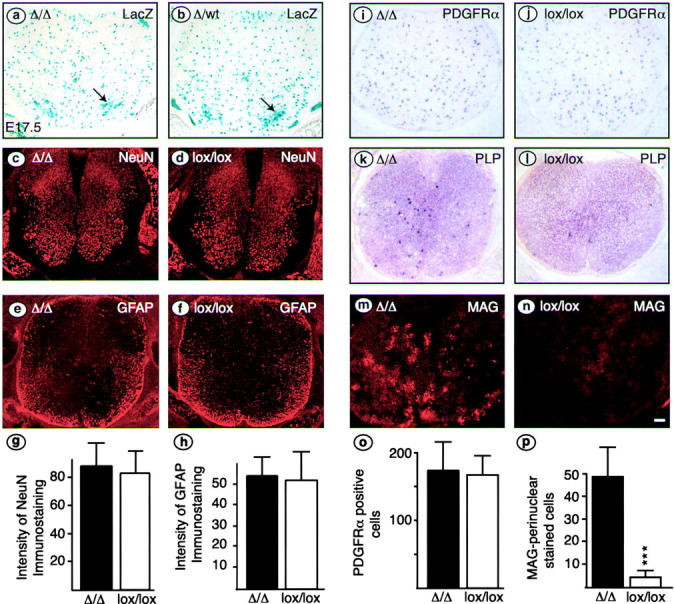Figure 2.

Precocious differentiation of immature OLs in E17.5 spinal cord of Cnp-CreΔ/Δ mice. (a and b) Sections were cut from triple transgenic animals carrying Cnp-Cre, R26R, and one (b) or two copies (a) of the floxed Notch1 allele. X-gal stainings indicate recombination with a similar pattern in homozygous mutant (a, Δ/Δ) or heterozygous mutant (b, Δ/wt) spinal cords; motoneurons are indicated by arrows. Neurons, astrocytes, OPCs, and immature OLs were compared in Cnp-Cre Δ/Δ and control (lox/lox) spinal cords by immunohistochemistry (c–f, m, and n) or in situ hybridization (i–l). Neurons, astrocytes, and OPCs, assessed by the markers NeuN (c and d), GFAP (e and f), and PDGFR-α (i and j), respectively, appear normal in conditional mutant animals (Δ/Δ) compared with control (lox/lox) littermates. Total image intensity was determined for 10 sections of each genotype. For NeuN (g), we integrated only in the region of the gray matter, and for GFAP (h) intensity was averaged over the whole spinal cord section. Intensities are in arbitrary units. The number of cells positive for PDGFR-α mRNA was similar in mutant and control animals (o). By contrast, the number of immature OLs, assessed by counting cells positive for perinuclear MAG immunoreactivity (m and n) is significantly increased in mutant compared with control spinal cord (p, mean ± SD; ***, P < 0.001, t test). The precocious differentiation was confirmed by in situ hybridization for Plp/DM20 (k and l). Bar: (a–f and i–n) 10 μm.
